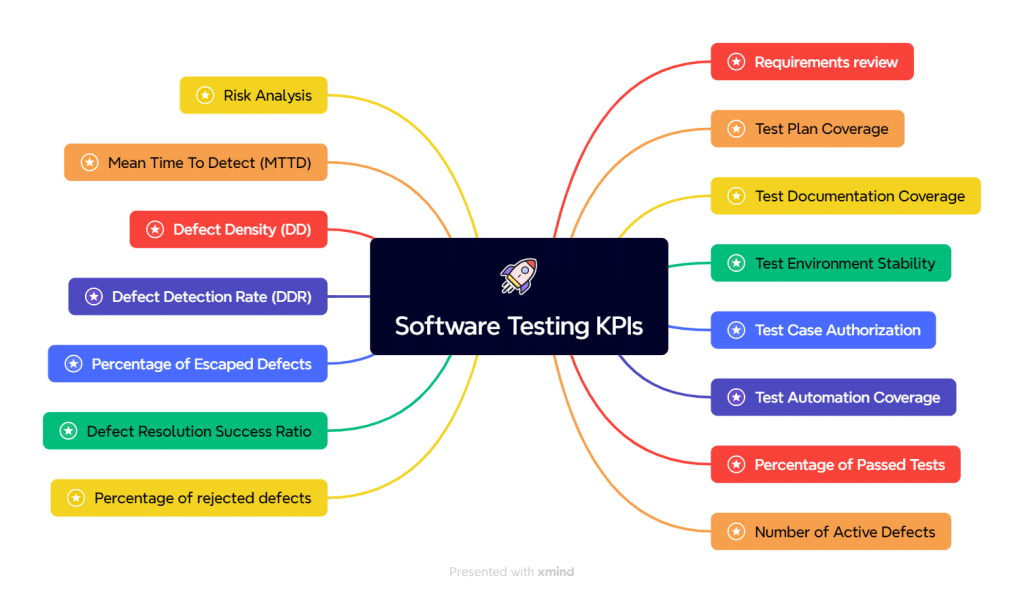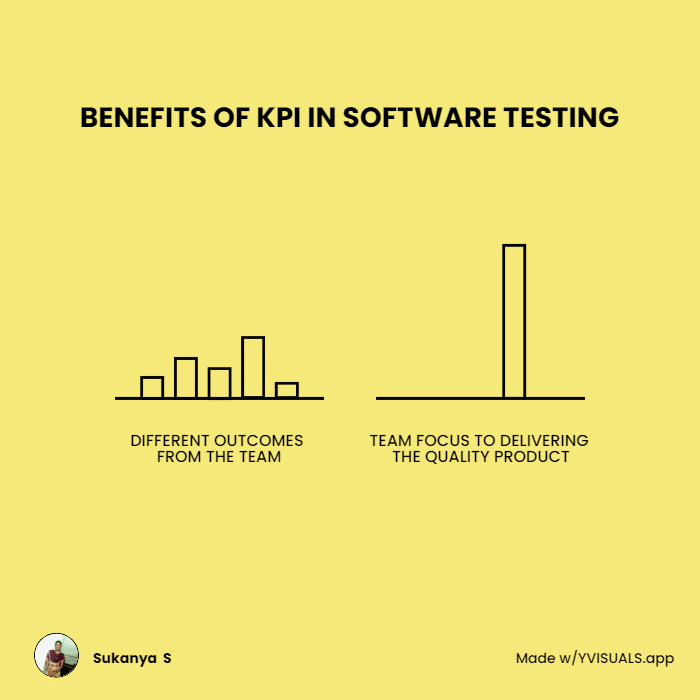Importance of Pair Testing
Do you think you can do all the work by yourself? Do you think you don’t need anyone to support or help you in your day-to-day life? A big NO? Life will be smooth when you collaborate with others when needed. For example, when you start cooking, driving, or whatever you do for your essential life, you seek someone.
Similarly, knowing how to pair with others for efficient testing is better. In the dynamic software development landscape, efficiency and quality assurance are paramount. One innovative approach gaining increasing recognition is pair testing. Just as pair programming has revolutionized code development, pair testing brings a collaborative and structured approach to software testing.
In this article, I will delve into the significance of pair testing with the right individual for crucial testing tasks. Below are the key areas we will explore.
- What is pair testing?
- Why is it important to do pair testing?
- How to do it?
- What are the benefits?
- Why should one avoid pair testing?
- How to conclude?
What is pair testing?
Ever heard of this term? It’s exactly what it sounds like. As the name suggests, pair testing is where two individuals sit together and test a product. Those can be the combination of tester & tester, tester & developer, and tester & business analyst. But they explore the product and collect the information together. It helps visualize the product differently and provides more test coverage.
Pair testing is an informal approach in which two individuals from diverse backgrounds leverage their unique knowledge to explore a product. They question and understand the product from their distinct perspectives, leading to a richer understanding. Here, either one acts as a real tester and the other one documents the testing, or both will do all the work.
When I began my career in software testing, I was unsure how to approach testing products effectively. A senior test engineer advised me to change my test strategy, which made a big difference. By working with experienced colleagues, I gained new perspectives and improved my testing outcomes. This collaboration helped me become a more effective tester. Sometimes, seeing things through someone else’s eyes is all you need to find the right path.
Now, whenever I’m stuck, I happily admit that two heads are better than one, especially when one of them is drowning in coffee. Seeking help not only saves time but also adds new tricks to my testing toolkit.
Why is it important to do pair testing?
When you collaborate with a Programmer or Business Analyst, their perception of the product often differs significantly from that of a tester. By pairing with them, you can act as a driver or a navigator based on the requirements and goals of the testing product.
Driver: As a driver, you would ask your partner to guide you on how to begin testing or exploring the product. In this way, you get new ideas from their point of view and start taking notes of it if necessary.
Navigator: When you act as a navigator, you should prepare well to guide the driver in the right direction and give the driver a chance to navigate their way. If it goes well, you both can start testing in different ways along with your test ideas. If it does not go in the right direction, stop there, explain it, and return to the track of your approach.
I am not suggesting that one should be in control of this approach. But it should be good when both persons act as drivers and navigators at times and it leads to a better understanding.
“We pair because it works for us, it’s enjoyable, and it also gives us the chance to learn from our differences as well as our similarities.” – Ma Kelly’s Greasy Spoon (Paul at BeagleSays.blog and Lee at TheRockerTester)
When two testers work together, it’s often beneficial for one to be relatively new to the product while the other is a Subject Matter Expert (SME). In this way, it helps to share their knowledge with others.
Pairing with experienced colleagues turned out to be my secret weapon, like finding the cheat codes for life! Take API testing, for example. When I was learning API testing for testing an API, I knew what was wrong but couldn’t find the core issue. My mentor’s advice was like a GPS for my lost brain, pointing me to the solution. It is not always about looking for people from the same project, but we can get advice outside of your project/organization without exchanging confidential information.
While pair testing enhances collaboration, it’s also vital to know when should testing be stopped to optimize resources.
How to do it?
1. Find the right pair
Choosing the right partner is crucial for successful pair testing. Consider the following when selecting the pair:
- Good communication: Ensure both testers can communicate effectively and are open to sharing their ideas and feedback.
- Complementary skills: Pair up with someone who complements yours.
- Willingness to collaborate: Make sure both parties are open to working together and respect each other’s opinions.
2. Set up the right environment where two people work closely without disturbance
- Minimize distractions: Select a quiet focus such as a meeting or conference room, or dedicated workplace where focus should not be distracted.
- Access to tools: Ensure both have access to necessary tools and resources such as communication tool, defect management tool, documentation tool, testing resources and applications.
3. Schedule a meeting so that no one disturbs your calendar.
- Plan ahead: Set up a specific time when both are available and make sure to get committed to the schedule.
- Block your calendar: Reserve your time in the calendar to avoid interruptions from other meetings and overlapping your tasks.
4. Understand the requirements
- Define scope: Know what you are testing and clearly outline any limitations and constraints.
- Identify targets: Determine which area of the product should be focused on testing during this pair session. It helps not to deviate from the topic and for maximum test coverage.
- Allocate time: Based on your availability, decide the timeframe of pair testing and stick to it.
5. Determine goals by identifying risks, create test ideas
- Identify risks: Discuss and note down the potential risks where the testing needs more attention.
- Generate test ideas: Brainstorm and discuss both of your test ideas for different scenarios to test thoroughly.
6. Document your findings
- Clear documentation: Record all your findings, issues, steps taken, and results.
- Use templates: Prepare a template before your session. It reduces the time for documentation.
7. Foster a collaborative atmosphere
- Promote equality: Ensure both should have equal opportunity to contribute to avoid dominance or partiality.
- Encourage communication: Allow each other’s ideas and feedback to communicate openly.
What are the benefits?
- Sharing knowledge gives new ideas and strategies to approach the product.
- Two sets of eyes on the product often lead to the discovery of more bugs. Also, when you log a defect, it will be automatically reviewed by the other and it does not need someone to spend their time specifically on it. So, it saves time.
- Enhanced creativity and problem-solving.
- It is fun and creates a great bond in the relationship when communicating well, even though both have different opinions.
- Training other employees facilitates knowledge transfer and skill development.
- It breaks down the barriers between two people.
- Gather more information and new ideas.

Some of the experts shared their experience and knowledge about the importance of pairing. I have shared a few articles to provide more context.
- The power of pairing by TestSheepNZ
- Pair Testing: How I brought developers into the Test Lab by Jonathan Kohl
- Being a navigator in Strong-style Pairing by Maaret Pyhäjärvi
- Styles of pair testing by Maaret Pyhäjärvi
When should one avoid pair testing?
“Is Pair Testing rocket science? No, it is a combination of working together and testing. However, it has a lot advantages above “single” testing. There will be knowledge sharing (about testing and the SUT), train new team members, break down barriers between team members and most important it is fun!
Be aware that you not always could and should use Pair Testing, use it when possible and use it wisely.” – Ralph van roosemalen
- If there is no right environment, don’t do it. Without mutual respect and trust, this experiment will fail.
- When the two people are not on good terms or had clashes earlier, better to try to avoid those circumstances from happening again.
- Test cases are already structured and you are going to execute those, highly recommend not to do pair testing. It consumes another resource time and energy.
Pair testing is not a cure for all problems but I could say it is an effective way when you collaborate with others if you have the right way to conduct this experiment. So, make sure the checklists are checked before doing the pair-testing session for a better outcome.
Some situations might not be suitable for pair testing. A few of them are:
- Strict rules and regulations: For example, industries like health care, finance, and banking sectors will follow certain restrictions, and it does not allow pair testing due to limitations of application/product accesses.
- Limited resources: When the project does not have enough resources, pairing up will lead to consume two manpower’s time and unable to focus on other tasks.
- Automated and well-defined test cases: When the testing is highly automated, and the test cases are well-defined, considering pair testing is irrelevant.
- Remote work challenges: Pairing can sometimes be difficult when working in a remote environment due to technical/communication issues.
- Complex problem solving: Some tasks require uninterrupted, deep focus and concentration. It will be distracted when pairing comes into the picture. In such situations, individual testing might be useful to finish the task.
- Skill Differences: If there is a big difference in skill levels between testers and they are expertise in unrelated areas, pair testing might not work well.
- Personal or Cultural Conflicts: If testers have different styles or personalities, pair testing could be counterproductive.
How to conclude?
Each testing session is an opportunity to learn and improve. By documenting our findings and reporting bugs, one contributes to a collective knowledge pool for the project. This not only benefits the project but also empowers them with insights for future endeavors, enabling them to grow as a team and as professionals.
Document your findings:
As we discussed earlier in the topic “How to do it”, using predefined template to note down the observations will reduce your time consumption. In the template, make sure the following could have included:
- Test session details: Time, date, people involved and test scope
- Test objectives: What was the aim of conducting this session, and what have you focused on and achieved in the testing session?
- Test strategy, scenarios and steps: What strategy have you implemented, what are the test scenarios covered and test steps have taken.
- Observations and defects: Capturing all the findings and identified defects must be encouraged to add in the document.
- Evidences: Attach relevant screenshots for easy reference and logs for clarity.
- Summary and suggestions: Provide the detailed summary of the session and suggestions to follow up actions.
Share within the organization:
- Use a centralized repository like version control (Example: GitHub), wiki, confluence or any repo used in the organization.
- Schedule a meeting to present your findings to the team to discuss the summary/results and a great platform to gather feedback to improve the process in future.
- Share your findings through email conversations to stakeholders for further process.
How to integrate findings into Continuous Improvement process:
- Conduct regular retrospectives: It helps to discuss what went well, new process improvement, lessons learned, what could be improved and what not.
- Update test strategies: Adjust or improve your test strategy based on new learnings and adapt with new discoveries.
- Create feedback loops: Share your findings with developers to refine product requirements and design. It guides to prioritize in future development cycles.
- Measure and monitor: Measure the impact of changes by tracking metrics like reduced bugs, faster issue resolution. It leads to idetify areas for further enhancement.
Mind map: Importance of pair testing
Conclusion
Just as two hands clapping produce a sound, the collaboration between two individuals can yield significant results when you maintain a positive atmosphere. In lines, pair testing helps us find issues, share ideas, and understand our product better. Let’s continue harnessing the power of pair testing to enhance the quality of our work and drive better results in future projects.
FAQ’s:
1. What is Pair Testing?
Pair Testing is a collaborative approach to software testing where two individuals, often with different roles or expertise, work together to test a product. Pair testing can effectively address challenges encountered with selenium alert handling. This method leverages diverse perspectives for more comprehensive test coverage and enhanced quality assurance.
2. What are the benefits of Pair Testing?
The benefits of Pair Testing include enhanced knowledge sharing, increased bug detection, improved problem-solving skills, fun and engaging testing sessions, and the opportunity for skill development and team bonding.
3. Is Pair Testing suitable for all types of projects?
While Pair Testing benefits many projects, its suitability depends on the project’s scope, the team’s dynamics, and the testing requirements. It’s most effective in environments that encourage collaboration and open communication.
4. Can Pair Testing help in agile environments?
Absolutely. Pair Testing is particularly well-suited to agile environments, where collaboration, quick feedback, and iterative development are key. It aligns with agile principles by promoting teamwork, adaptability, and continuous improvement in the testing process.















